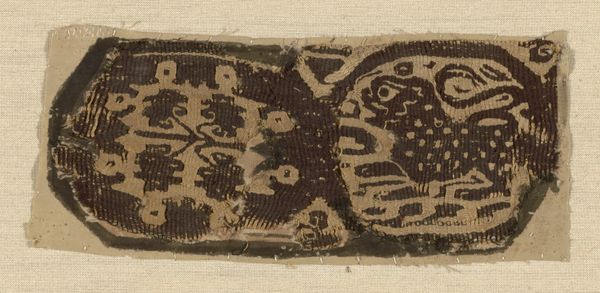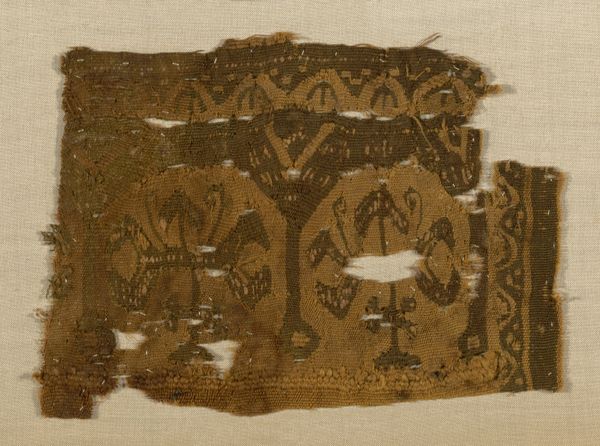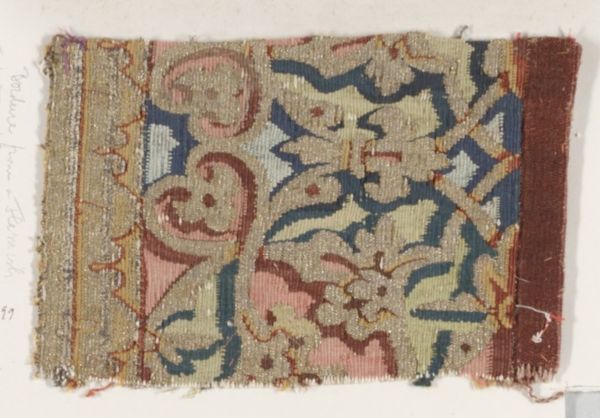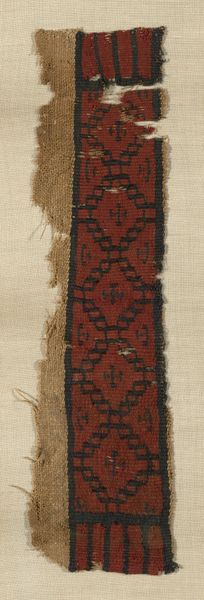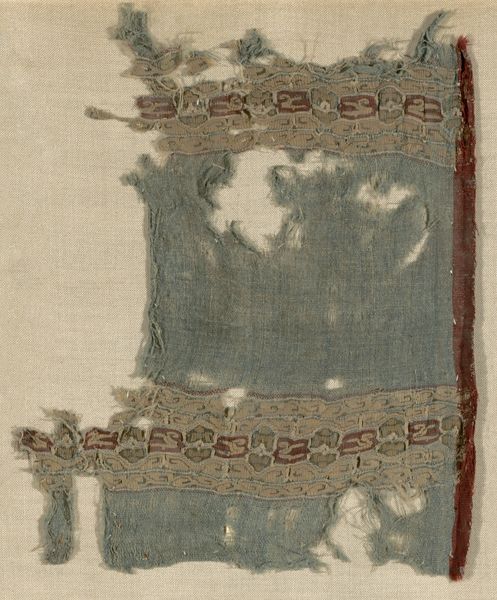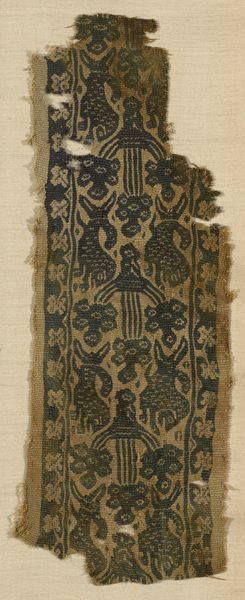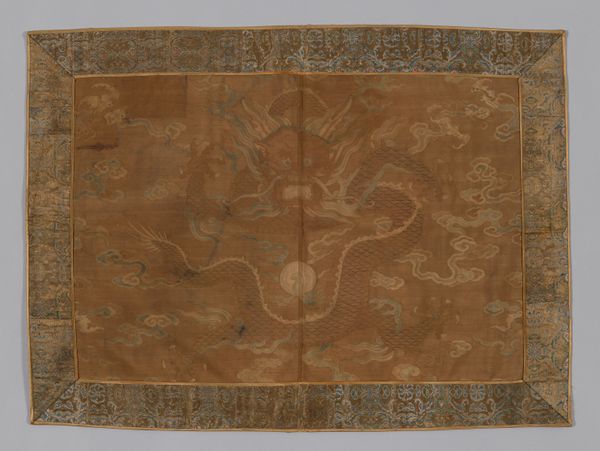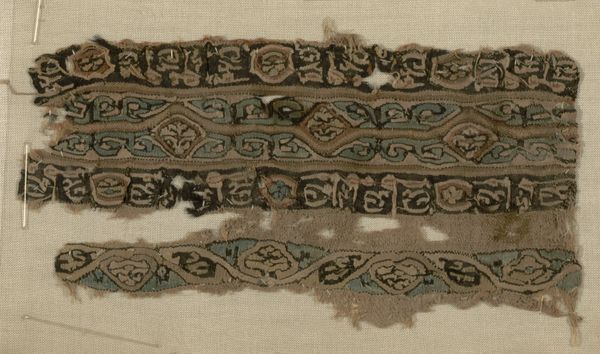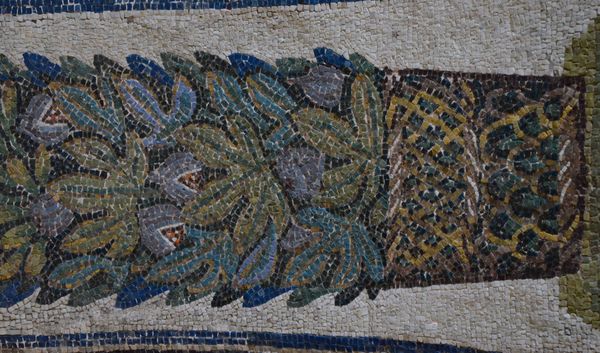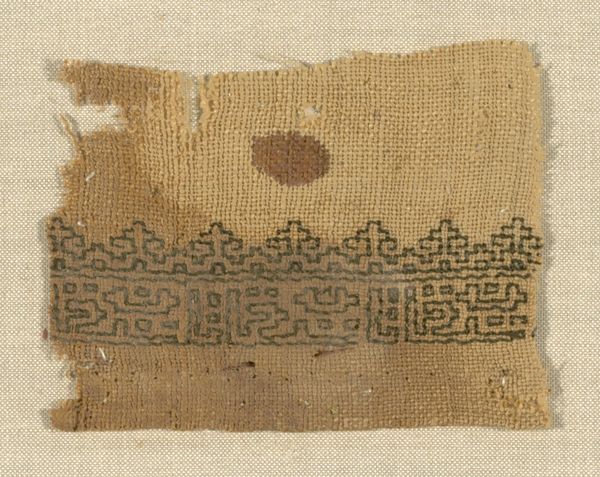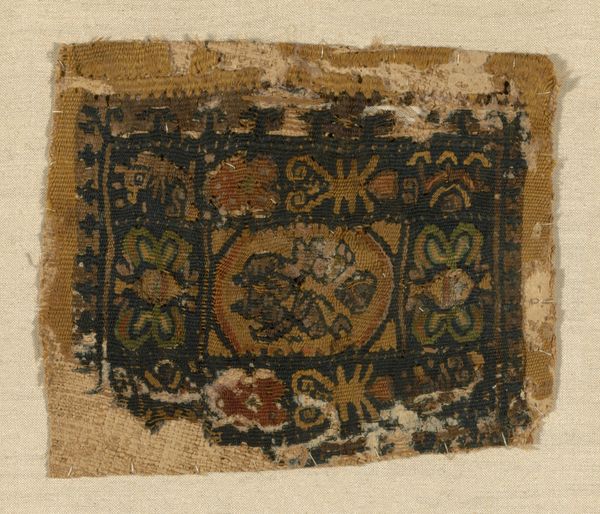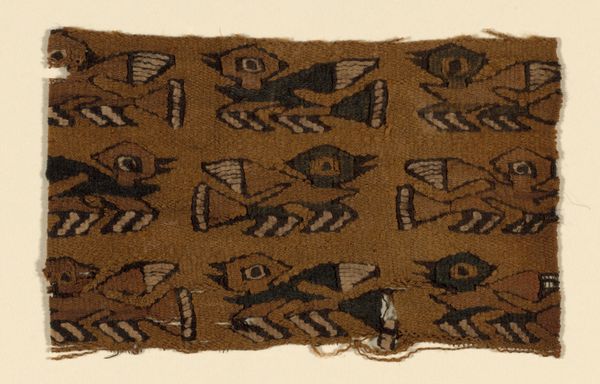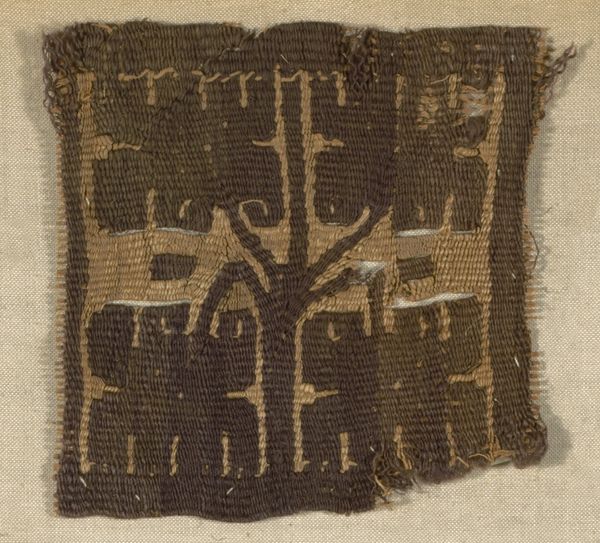
weaving, textile, wool
#
weaving
#
textile
#
ancient-egyptian-art
#
wool
#
ancient-mediterranean
#
line
Dimensions: 19.1 × 6.4 cm (7 1/2 × 2 1/2 in.)
Copyright: Public Domain
Editor: Here we have a Coptic textile from the Roman period, sometime in the 4th to 6th century. It’s a woven wool fragment called "Border," currently housed at the Art Institute of Chicago. I’m struck by how playful the imagery is—hares and birds amidst decorative flourishes, but also, how such a small fragment could have significance. What can you tell us about the cultural context? Curator: Well, this fragment offers a fascinating glimpse into the cultural exchange happening in Roman Egypt. Textiles like this weren't merely decorative; they actively participated in constructing social identity. We can see the confluence of Roman artistic conventions with indigenous Egyptian traditions and early Christian symbolism. How do you see that at play here? Editor: I suppose the animal motifs feel very ancient Egyptian to me. I understand birds and hares both carried symbolic meanings in pre-Christian Egypt, but how do they fit in this later period? Curator: Precisely! By this period, these motifs are adapting. While the imagery nods to pre-Roman Egypt, the weaving technique and the way these motifs were used reflect broader trends in Roman decorative arts. The fragment may have adorned clothing or a furnishing, signaling status and cultural affiliations in a visually rich language understandable across different communities. The inclusion of animals can represent both prosperity and blessings. Also consider how access to quality textiles were indicative of power and resources. Editor: So it's not just about the image, but the ownership itself? Curator: Exactly. And think about where this textile might have been found. Was it in a wealthy home? A burial site? Each context would drastically change our interpretation. Who might have commissioned this, and what statement were they trying to make about themselves and their place in society? Editor: This really shifts my understanding. I initially just saw a pretty design. Now I see it as a product of social forces! Thank you. Curator: Likewise! Thinking about art as more than just aesthetics is a fascinating exercise. I find the implications for social hierarchies most revealing in understanding it all.
Comments
No comments
Be the first to comment and join the conversation on the ultimate creative platform.
